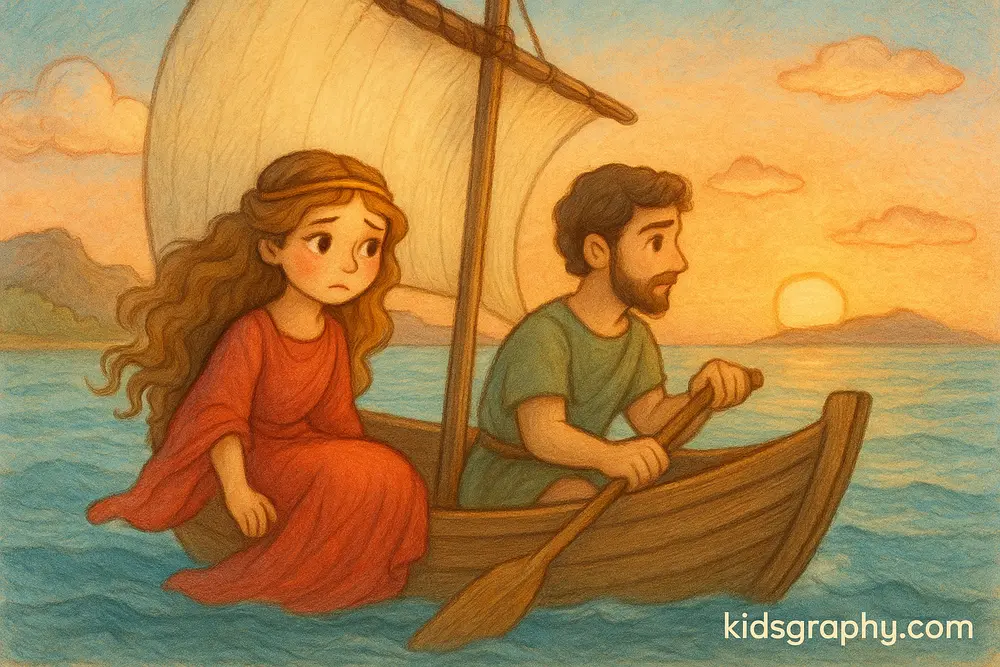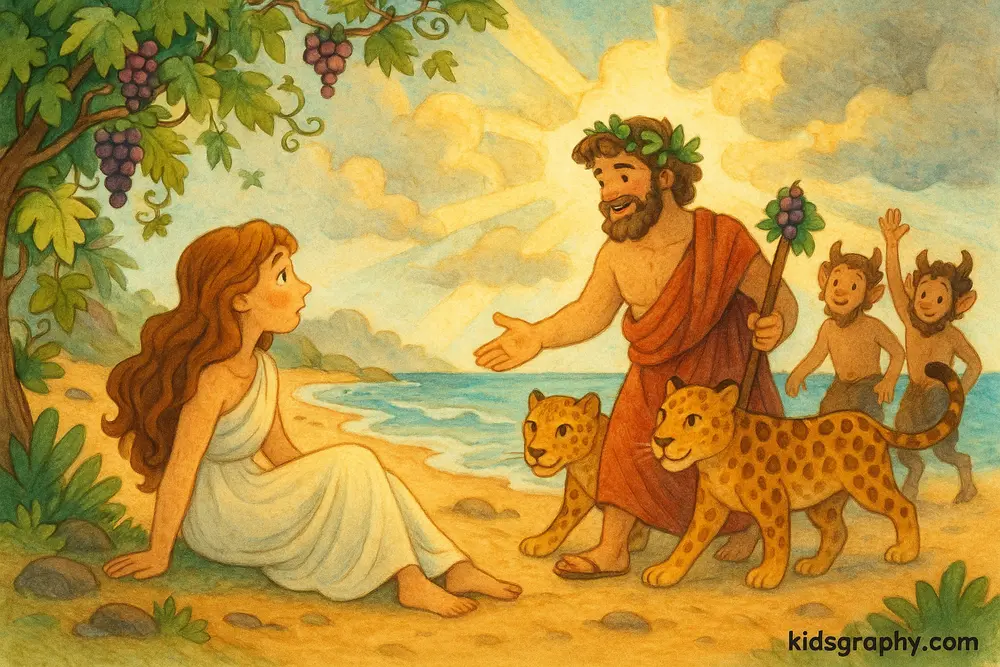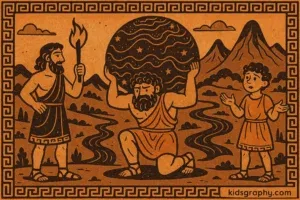In the winding threads of Greek mythology, one name stands out as both brave and tragic—Ariadne. Known for her cleverness and compassion, she helped one of the greatest heroes survive a deadly challenge. But her story doesn’t end there. From the dark maze of the labyrinth to the divine skies of Olympus, Ariadne’s journey is one of love, betrayal, and transformation.
Read More: Calypso Greek Mythology: The Lonely Nymph
Who Is Ariadne in Greek Mythology?
Ariadne was a Cretan princess, the daughter of King Minos and Queen Pasiphae of Crete. That made her part of one of the most powerful royal families in myth. But Ariadne didn’t just sit on a throne—she changed the course of legends.
She is most famous for helping Theseus, a brave prince from Athens, escape a deadly trap known as the labyrinth. Her kindness and intelligence turned her from a princess into a heroine.
Read More: Nyx in Greek Mythology: Goddess of the Night
The Labyrinth and the Minotaur
The labyrinth was a massive, twisting maze built by Daedalus, a genius inventor. Inside the maze lived the Minotaur, a half-man, half-bull monster. Every year, Athens was forced to send seven boys and seven girls to be sacrificed to the Minotaur.
When Theseus volunteered to enter the labyrinth and kill the beast, Ariadne fell in love with him. She gave him a ball of thread—called Ariadne’s thread—so he could find his way out after defeating the monster.
Thanks to Ariadne’s idea, Theseus killed the Minotaur and escaped the maze alive. She had saved not only him but also the future of Athens.
Ariadne and Theseus: A Short-Lived Love
After their escape, Theseus and Ariadne left Crete together. But the story takes a sad turn. On the island of Naxos, Theseus abandoned Ariadne while she slept. The reason why varies in different versions:
- Some say the gods told him to.
- Others say he feared bringing her to Athens as a former enemy’s daughter.
- And some just say he betrayed her.
Heartbroken and alone, Ariadne’s story could have ended there. But the gods had other plans.
Ariadne and Dionysus: From Sorrow to Divinity
While she wept on the shores of Naxos, Dionysus, the god of wine and joy, found her. He fell in love with Ariadne and made her his wife. Their marriage was said to be joyful, full of music, feasting, and love.
Dionysus gave her a crown of stars—a golden diadem—which later became the constellation Corona Borealis in the night sky.
Some stories say Ariadne died and Dionysus brought her back to life. Others say she was made immortal, joining the gods on Mount Olympus.
Either way, Ariadne was transformed from a mortal princess to a goddess, honored for her courage and loyalty.
Read More: Circe in Greek Mythology: The Witch of Aiaia
Why Ariadne Matters in Greek Mythology
Ariadne’s story shows how a woman with kindness and cleverness can change fate. She helped a hero, survived heartbreak, and found a divine destiny.
- She represents hope in darkness—offering a lifeline in a deadly maze.
- She shows that love can hurt, but life can still offer new beginnings.
- She reminds us that every thread we follow leads somewhere new.
Read More: Ajax in Greek Mythology: Warrior of Honor and Tragedy
The Symbolism of Ariadne’s Thread
The term “Ariadne’s thread” has become a symbol in modern language and literature. It represents a guide through a complex situation, a way to solve a problem that seems impossible. Just as Ariadne’s string helped Theseus escape the labyrinth, this concept now stands for:
- A clear path through confusion
- Logical thinking and planning
- Creative problem-solving
It’s often used in philosophy, puzzles, and even computer science as a method to track and untangle complex logic.
Read More: Cronus in Greek Mythology: Titan of Time and Power
Ariadne in Ancient Art and Literature
Ariadne’s story was a favorite theme in ancient Greek and Roman art. Mosaics, vases, and wall paintings often show her sleeping on the island of Naxos as Dionysus arrives, surrounded by satyrs and maenads. Her image became a symbol of abandonment and divine rescue.
She also appears in plays and poems throughout history, such as:
- Ovid’s “Heroides”, where she writes a sorrowful letter to Theseus
- Euripides, who wrote a lost play called Ariadne
- Renaissance and modern poets, who portrayed her as a tragic heroine and goddess
Was Ariadne a Goddess?
While Ariadne was born a mortal, her story ends with divine transformation. After marrying Dionysus, many myths describe her as a goddess of passion, fertility, and rebirth.
She’s sometimes honored in:
- Mystery cults tied to Dionysus
- Seasonal festivals, symbolizing the cycle of loss and renewal
- Constellations, as her crown shines forever in the night sky
Her journey from heartbreak to godhood reflects the Greek idea that even humans can rise to divine greatness through love, loyalty, and courage.
Read More: Hera in Greek Mythology: Queen of the Gods
What Ariadne’s Myth Teaches Us Today
Ariadne’s tale isn’t just an ancient story—it still speaks to us today. She teaches:
- That cleverness and kindness can change lives
- That loss is not the end, but often the start of something new
- That sometimes, being left behind can lead to finding something greater
Whether we face mazes of our own, or feel abandoned like she once did, Ariadne reminds us that there is always a thread to follow, and perhaps, something divine waiting ahead.
More Stories: Ariadne in Greek Mythology
FAQ: Ariadne in Greek Mythology
Ariadne is a Cretan princess and daughter of King Minos. She is best known for helping Theseus escape the labyrinth after slaying the Minotaur.
Ariadne gave Theseus a thread to find his way out of the labyrinth. This “Ariadne’s thread” has come to symbolize a clever solution to a complex problem.
According to myth, Theseus left Ariadne on the island of Naxos. Some stories blame divine intervention, while others suggest betrayal or fear of political consequences.
Ariadne married Dionysus, the god of wine and festivity. He later made her immortal and placed her crown in the stars as the constellation Corona Borealis.
Yes, in later myths, Ariadne is honored as a goddess. After her marriage to Dionysus, she was granted immortality and joined the gods on Mount Olympus.











